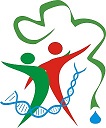Natural dye plants for buton woven fabric in Wabula Village, Buton District
Abstract
Keywords
Full Text:
PDFReferences
Afan, M., Wiraningtyas, A., Agustina, S., & R, R. (2020). Pemanfaatan Ekstrak Daun Sirih Hijau (Piper Betle L.) Sebagai Zat Pewarna Alami (ZPA) Tekstil Dan Aplikasinya pada Benang Tenun. Jurnal Redoks : Jurnal Pendidikan Kimia dan Ilmu Kimia, 3(2), 20–27. https://doi.org/10.33627/re.v3i2.423
Alamsjah, F. A., Sunarya, Y. Y., & Rudiyanto, G. (2021). Rancangan Pewarnaan Alami Daun Suji pada Tenun Sutera Sengkang, Sulawesi Selatan. Jurnal Seni Dan Reka Rancang: Jurnal Ilmiah Magister Desain, 4(1), 79–88. https://doi.org/10.25105/jsrr.v4i1.9973
Ariyanti, M., & Asbur, Y. (2018). Tanaman Tarum (Indigofera tinctoria Linn. ) sebagai Penghasil Zat Pewarna. Jurnal Hutan Pulau-Pulau Kecil, 2 (1), 109–122. https://doi.org/10.30598/jhppk.2018.2.1.109
Arta, T. K., Atika, V., Haerudin, A., Isnaini, I., & Masiswo, M. (2019). Kualitas Pewarnaan Batik menggunakan Bubuk Indigofera tinctoria dan Strobilanthes cusia. Dinamika Kerajinan Dan Batik: Majalah Ilmiah, 36(2). https://doi.org/10.22322/dkb.v36i2.5421
Atika, Kamis, A., Syamwil, R., Widowati, Fadia, I. S., & Milannis, A. S. (2022). Weeds as an environmentally friendly alternative dyes. IOP Conference Series: Earth and Environmental Science, 969 (1). https://doi.org/10.1088/1755-1315/969/1/012037
Budiastuti, M. T. S., Setyaningrum, D., Purnomo, D., Supriyono, Pujiasmanto, B., & Manurung, I. R. (2022). The Critical Period of Production of the Secondary Metabolite Indican in (Indigofera tinctoria L.) on Light Intensity. Indian Journal of Agricultural Research, 56(5), 533–538. https://doi.org/10.18805/IJARe.AF-704
Darma, I. D. P. (2015). Keragaman tumbuhan sebagai pewarna pada kerajinan tenun suku Sasak: Studi kasus di Desa Sukarara, Kecamatan Jonggat, Kabupaten Lombok Tengah, Nusa Tenggara Barat. 1(Baliarsingh 2012), 753–756. https://doi.org/10.13057/psnmbi/m010412
Erdawati, Lisdiana, H., & Saefurahman, G. (2023). Utilization of Indigofera Leaves as Natural Dyes for Silk Fabrics. IOP Conference Series: Earth and Environmental Science, 1187(1), 0–6. https://doi.org/10.1088/1755-1315/1187/1/012014
Failisnur, F., Sofyan, S., Kasim, A., & Angraini, T. (2018). Study of cotton fabric dyeing process with some mordant methods by using gambier (Uncaria gambir Roxb) extract. International Journal on Advanced Science, Engineering and Information Technology, 8(4), 1098–1104. https://doi.org/10.18517/ijaseit.8.4.4861
Febriana, I. D., Gala, S., & Mahfud, M. (2017). Ultrasound assisted extraction of natural dye from jackfruit’s wood (Artocarpus heterophyllus): The effect of ethanol concentration as a solvent. AIP Conference Proceedings, 1840, 1–5. https://doi.org/10.1063/1.4982293
Ihsan, T., Saputro, S., & Mahardiani, L. (2020). Natural Dye from Kepok Banana Leaf Stalk on Cotton Fabric with Variation of Fixation. JKPK (Jurnal Kimia Dan Pendidikan Kimia), 5(3), 325. https://doi.org/10.20961/jkpk.v5i3.46542
Jordeva, S., Kertakova, M., Zhezhova, S., Golomeova-Longurova, S., & Mojsov, K. (2020). Dyeing of textiles with natural dyes. Tekstilna Industrija, 68(4), 12–21. https://doi.org/10.5937/tekstind2004012j
Kaswinarni, F., Apriliani, R., & Dewi, E. R. S. (2019). Potensi Gunung Ungaran di Desa Ngesrep Balong, Limbangan Kabupaten Kendal Jawa Tengah sebagai Penghasil Tumbuhan Pewarna Alami Kain Batik. Life Science, 8(2), 106–112.
Klančnik, M. (2021). Printing with natural dye extracted from impatiens glandulifera royle. Coatings, 11(4), 445. https://doi.org/10.3390/coatings11040445
Lestari, D. W., Atika, V., Isnaini, I., Haerudin, A., & Arta, T. K. (2020). Pengaruh pH Ekstraksi pada Pewarnaan Batik Sutera Menggunakan Pewarna Alami Kulit Kayu Mahoni (Switenia Mahagoni). Jurnal Rekayasa Proses, 14(1). https://doi.org/10.22146/jrekpros.54439
Novita, N., Dahlan, D., Bahi, M., & Erni, E. (2021). Preliminary study of local plant utilization (Mahogany) for natural textile. IOP Conference Series: Earth and Environmental Science, 667(1), 6–10. https://doi.org/10.1088/1755-1315/667/1/012105
Paryanto, P., Nur, A., & Nurcahyanti, D. (2018). Produksi Dan Aplikasi Zat Warna Alami Dari Kulit Kayu Mahoni Dan Kulit Kayu Tingi Untuk Batik Di Desa Kuwiran, Kecamatan Banyudono, Kabupaten Boyolali. Jurnal Ilmiah Momentum, 14(2), 1–7. https://doi.org/10.36499/jim.v14i2.2505
Qadariyah, L., Gala, S., Widoretno, D. R., Kunhermanti, D., Bhuana, D. S., Sumarno, & Mahfud, M. (2017). Jackfruit (Artocarpus heterophyllus lamk) wood waste as a textile natural dye by micowave-assisted extraction method. AIP Conference Proceedings, 1840. https://doi.org/10.1063/1.4982324
Rinawati, R., Sembiring, Z., Simanjuntak, W., & Rosa, E. (2021). Pembuatan Serbuk Pewarna Alami Dari Berbagai Tanaman Tropis Dengan Metode Oven Drying. Jurnal Pengabdian Kepada Masyarakat (JPKM) TABIKPUN, 2(2), 101–108. https://doi.org/10.23960/jpkmt.v2i2.20
Rosyida, A., Achadi W, D. (2014). Pemanfaatan daun jati muda untuk pewarnaan kain kapas pada suhu kamar. Arena tekstil, 29(2), 115-124.
Sabariah, N., Wulan, R. R., & Pramana, M. I. (2021). Pengembangan Ragam Produk Kain Tenun Buton sebagai Upaya Revitalisasi Kebudayaan Buton. SANDI: Seminar Nasional Desain, 1.
Saefudin, & Basri, E. (2022). Effect of fixator on color performance of bark extract from three tropical wetland species for fabric dye. IOP Conference Series: Earth and Environmental Science, 976(1). https://doi.org/10.1088/1755-1315/976/1/012049
Setyaningrum, D., Budiastuti, M. T. S., Purnomo, D., & Adi, R. K. (2023). The Role of Organic Nutrients on Growth and Nutrient Uptake of Indigofera tinctoria L. in Agroforestry Systems. BIO Web of Conferences, 69, 1–7. https://doi.org/10.1051/bioconf/20236901012
Slamet, A. (2017). Corak Motif Flora Sarung Tenun Buton Sebagai Pembelajaran Berbasis Lingkungan (Studi Etnobotani Terhadap Masyarakat Buton). Seminar Nasional Pendidikan Biologi Dan Saintek II, 571–577.
Widiana, L.N., & Sugiyem, S. (2021). Warna Daun pada Kain Sutera dengan Pewarna Alam Buah Ranti (Solanum nigrum L.). Prosiding PTBB, 16(1), 1-7.
DOI: http://dx.doi.org/10.30821/biolokus.v7i1.1365
Refbacks
- There are currently no refbacks.
Copyright (c) 2024 Jurnal Biolokus: Jurnal Penelitian Pendidikan Biologi dan Biologi
indexed by :












